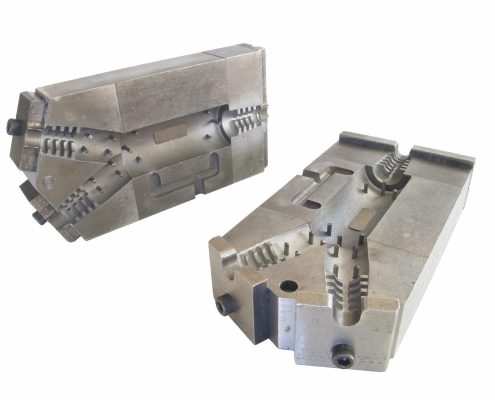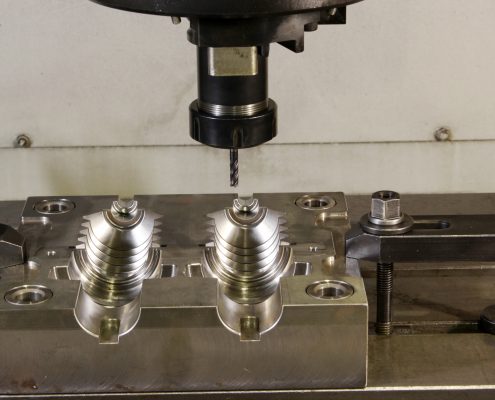Tool Steels
Molex® #13
HOT WORK TOOL STEEL
Molex #13 is a versatile hot work steel that can be widely used in various hot and cold work tooling applications. The combination of good red hardness and abrasion resistance, with the ability to resist heat checking makes this a popular work horse tool steel. It can withstand drastic cooling from high operating temperatures. Consider this when specifications call out for AISI H-13 tool steel.
Molex #13 is a 5% Chrome, High Vanadium Hot Work Tool Steel that is commonly regarded as “The most forgiving hot work die steel”. You cannot find a more universally accepted tool steel to provide resistance to thermal shock (readily stands up to tool temperatures up to 1000°F).
Typical applications include: extrusion dies, hot shear blades, plastic mold cavities and hot forging dies. Call or email us for a quote.
Spacing
Key Features
Excellent Impact and Shock Resistant
Excellent Toughness
Good Red Hardness
Good Wear Resistance
Resists Thermal Fatigue Cracking
Typical Surface Condition*
- Ground Top and Bottom – (+.015”/+.035” oversize)
- Sides Saw Cut – (+1/8”)
- Length Saw Cut – (+1/8” oversize)
- Surface Finish – RMS 125 or better
*As delivered (pre-machined condition)
Spacing
Applications
- Extrusion Dies
- Plastic Mold Cavities
- Hot Shear Blades
- Shot Sleeves
- Gripper Dies
- Hot Forging Dies
- Die Casting
- Trimmer Dies
- Die Holder Blocks
Available Lengths
10/12 Ft Random Lengths and Custom-Cut-To-Lengths
Available Sizes
Call our office for current availability.
Spacing
Thermal Treatment*
Annealing – Annealing must be performed after hot working and before re-hardening. Heat at a rate not exceeding 400°F per hour to 1,575°F/1,675°F, and hold at temp. for one hour per inch of max thickness; 2 hours minimum. Cool slowly, not exceeding 50°F per hour to 1000°F. Continue to cool in ambient temp.
Hardening—Preheating: – In a controlled environment, preheat slow and thoroughly to 1,300°F/1,400°F, equalize, then raise to 1,800°F/1,850°F and hold for an hour per inch of greatest cross section of material. When maximum hardness is the primary requirement, quench in still air and temper immediately. Use a double preheat on complex tools.
Quenching – Air, pressurized gas, or warm oil. For pressurized gas quenching, a minimum rate of 50°F per minute to below 1000°F is required to obtain the optimum properties in the steel. For oil, quench until black, about 900°F, then cool in still air to 150°F/ 125°F.
Tempering – Temper immediately after quenching. Typical tempering range is 1,000°F/1,150°F. Hold at the tempering temp. for 1 hour per inch of thickness, but for 2 hours minimum, then air cool to ambient temp. Double tempering is required. To maximize toughness and tool performance, a third temper is often used as a stress relief after all finish work is completed.
Tempering Chart –
@ 400°F typical hardness Rockwell “C” 54.
@ 1,100°F typical hardness Rockwell “C” 46.
@ 1,200°F typical hardness Rockwell “C” 36.
* Above values are typical and are not guaranteed.


